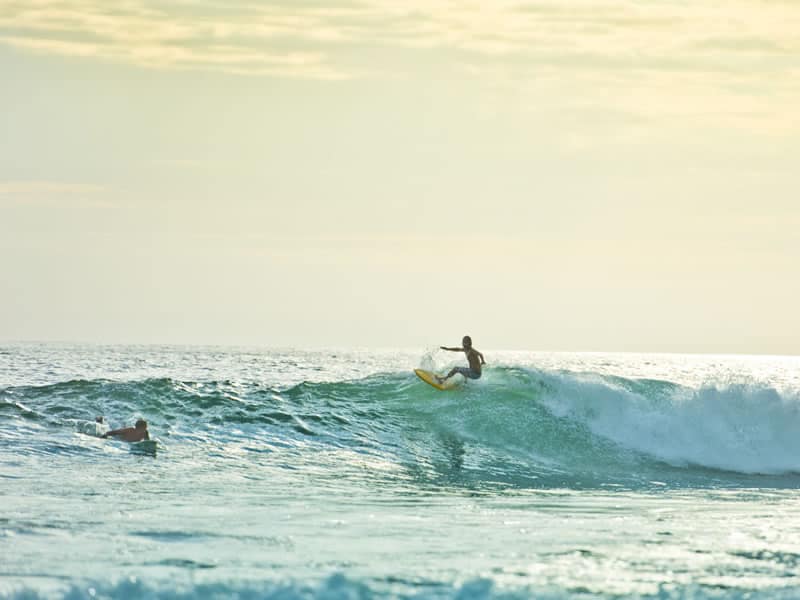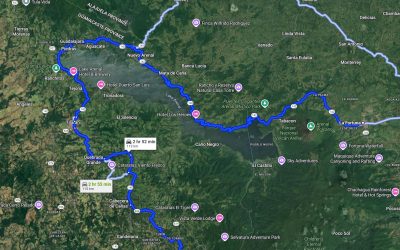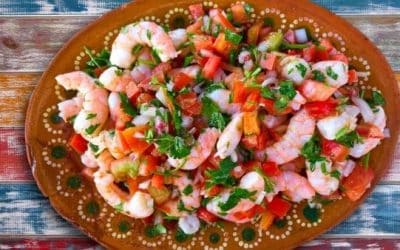Manuel Antonio: Costa Rica’s Jungle Postcard With a Secret—It Surfs Brilliantly
Manuel Antonio National Park gets the fame for sloths in sea-almond trees, macaws flashing scarlet over jade coves, and jungle trails that end at beaches so pretty they look edited. What many visitors miss is that the same gentle, inviting curves that make it photogenic also make it a superb place to learn, cruise, and flat-out enjoy surfing. With soft sand, forgiving beach breaks, and an easy daily rhythm—hike at sunrise, surf by mid-morning, ceviche at sunset—Manuel Antonio is where first waves and happy intermediates happen.
Why the surf here feels so friendly
This coast catches consistent Pacific energy yet softens it over sandbars, creating long, approachable peelers. Most days run waist- to chest-high with mellow faces and wide channels that make paddling out simple. The shoreline bends just enough to tame the wind and organize the peaks, so you’re not fighting the ocean—you’re flowing with it. On a stronger south swell, the waves add a playful push without turning mean, giving progressing surfers zippy sections to trim and cut back.
Conditions at a glance
-
Break type: Predominantly sandy beach breaks—soft landings, smooth learning curve.
-
Typical size: Waist to chest most of the year; bigger pulses on strong souths (May–Nov).
-
Best tide/wind: Early mornings are commonly clean; mid-tide often shapes the banks nicely.
-
Water temp: Warm year-round—think rash guard for sun, not a wetsuit for cold.
-
Crowds & vibe: Popular but relaxed; families, learners, and cruisy longboarders keep it friendly.
The main lineup: Playa Espadilla / Playa Manuel Antonio
Just north of the national park entrance, the stretch most people call Playa Manuel Antonio (technically Playa Espadilla) is the area’s go-to bank. It’s tailor-made for surf lessons and confidence building: rolling takeoffs, generous shoulders, and forgiving whitewater for first pop-ups. When the swell wakes up, you’ll see tidy peaks offering fun lefts and rights—perfect for foamies, funboards, and fishes. It’s the beach you wish you’d learned on.
The step-up option: Playitas
About a kilometre further north, Playitas perks up with more swell. It’s still a beach break, but with a bit more personality and, often, fewer people. On a solid south, expect faster walls and a little extra punch. Read the banks before you paddle out and give the rocky patches respect; the reward is uncrowded runners when Espadilla feels busy.
What makes Manuel Antonio great for progression
-
Forgiving takeoff zone: Smooth, sloping peaks let you stand early and set a line.
-
Real shoulders to work with: Enough face to practice trimming, cutbacks, and cross-steps.
-
Easy logistics: Rentals and lessons right on the sand; cafés for a reset between surfs.
-
Mix-and-match days: If your arms are cooked, swap the second session for a rainforest trail or snorkel.
Getting there without the faff
Fly Sansa to Quepos for the quick route, then taxi or shuttle ten minutes to Manuel Antonio. Driving? Roll the Costanera Sur (Highway 34) and follow signs to Quepos/Manuel Antonio. Base yourself near the main beach and you can walk to the waves, food stalls, and sunset viewpoints. Plan two to four days to sample morning glass, an afternoon hike, and a lazy day that accidentally turns into three surfs.
Lessons, rentals, and local help
Manuel Antonio isn’t a hardcore surf town, and that’s the charm—you won’t be snaked by a frothing pack. For first timers or refreshers, book with Barrabas Surf School or Manuel Antonio Surf School—both are well-reviewed and patient with real ocean coaching, not just beach drills. They’ll match you to the right board (7’0″–8’0″ for most beginners), set expectations for the tide, and put you on the friendliest peak.
Quick kit & etiquette guide
-
Boards: Foamie or funboard for starters; fish/groveler for playful days; a log is bliss on clean mornings.
-
Essentials: Reef-safe sunscreen, rash guard, hat for beach walks, plenty of water.
-
Local respect: Smile, share, and keep an eye out for learners. Wildlife is wild—don’t feed monkeys, guard your snacks.
Beyond the break
When you’re not sliding across green water, you’re on jungle paths spotting sloths, capuchins, and toucans. Lunch is a casado or ceviche by the beach; evenings bring live music, market stalls, and golden-hour views that look staged. If you’re scouting lifestyle investments, the area blends eco-boutique hotels, villas with tree-top views, and a service economy that hums year-round.
Manuel Antonio will not make you a charger overnight—and that’s exactly why it’s special. It’s where surfing becomes second nature, where you learn to trust your feet, and where the memory of your first real glide stays louder than any trophy shot.






